When it comes to reopening your business during the COVID-19 pandemic, one concern probably stands above all others: safety. Workplace safety impacts everyone who interacts with your business, from employees and vendors to customers and the local community. Safety is not only about health; it’s about confidence, trust, and keeping your business going.
With such high stakes, it can be overwhelming to figure out where to begin. We’ve created this workplace safety checklist to walk you through the steps to safely reopen your business.
1. Review available guidance
First, read and review all available guidance from organizations such as the Centers for Disease Control (CDC), Occupational Safety and Health Administration (OSHA), Equal Employment Opportunity Commission (EEOC), and the Department of Labor, as well as any regulations and guidance from your local and state government. These guidelines will inform your workplace safety checklist and reopening plan.
Monitor state and local public health communications related to COVID-19 to stay aware of the latest conditions and recommendations. Also, check any industry bodies relevant to your business (such as the National Restaurant Association) for best practices.
2. Create a plan
Once you’re aware of guidelines and best practices, it’s time to formalize your approach to reopening with a plan and a set of policies. These policies may change as the situation evolves, but they’ll provide important standards for employees as you reopen.
Your policies should include a set of safety standards and behaviors for employees and guests, such as maintaining social distancing and using personal protective equipment (PPE) when necessary. The CDC recommends designating one person as a workplace coordinator who’s responsible for implementing your COVID-19 health and safety policies.
Develop a response policy in the event that an employee or customer gets COVID-19 or exhibits symptoms. How will your business handle it? For example, determine if you will close the entire location or specific areas where the risk of spread can be isolated. Your response policy should also include how you will communicate to employees and customers in the event of this scenario.
3. Check and prepare the building
Before bringing employees or customers onsite, you first need to ensure their safety by checking building conditions and making alterations to support new safety protocols.
Evaluate the building and essential systems
If your building went unused during shutdown, safety issues may have arisen during this time. Evaluate all of the building’s essential systems, such as mechanical, water, electrical, HVAC, and safety systems, to ensure they’re operating correctly. Also, check for issues that can result from disuse, including mold, pests, stagnant water, and more.
Conduct a hazard assessment
Conduct a thorough hazard assessment to identify where employees, vendors, or customers could come into close contact (6 feet or fewer) with each other. Once you’ve identified these areas, follow the next steps to mitigate them by modifying the layout or using PPE.
Modify the workplace for social distancing
To whatever extent possible, physically rearrange your workplace to enforce social distancing protocols. The exact measures will depend on the type of business and location, but the goal is to minimize contact between individuals.
Keep in mind that public safety codes, building codes, and any other applicable laws must not be compromised to achieve social distancing.
- Modify workstations, seating, and furniture to maintain social distancing of 6 feet, where possible.
- Close or create social distancing practices for common areas, such as cafeterias, conference rooms, or other collaborative spaces where employees congregate.
- Encourage the use of outdoor seating areas and social distancing for any small group activities, such as lunches, breaks, and meetings.
- Install physical barriers like clear plastic sneeze guards between workers and customers at checkout registers, help desks, and similar areas.
- Promote remote shopping alternatives such as delivery and pickup, and move electronic payment readers away from cashiers.
- Use colored tape, signs, or other visual cues to promote social distancing and illustrate appropriate 6-foot distances.
- Replace high-touch communal items, such as bulk coffee pots, snacks, and water fountains, with individual, single-serve items.
- Install no-touch trash cans.
- Install high-efficiency air filters, and increase ventilation by opening doors and windows and using fans.
- Address confined spaces, such as elevators, stairwells, and hallways (consider adopting one-way protocols).
- Have the facilities professionally cleaned and sanitized.
4. Determine and procure PPE
In instances where person-to-person contact cannot be avoided or is required by local regulations, employees will need PPE. Determine what type of PPE, such as face masks, is needed for specific job duties. Provide these supplies to employees.
If you have customers, vendors, or other nonemployees entering your business, develop a PPE policy for them to follow when on the premises.
5. Train employees on safety measures
Before bringing employees back to the workplace, be sure to adequately communicate and educate them about what will be changing.
Develop a training program to re-onboard employees. This should help put their minds at ease about workplace safety, as well as instruct them on implementing your new protocols. The training can be simple but should address the following topics:
- New workplace safety policies
- General hygiene practices
- COVID-19 symptoms
- Social distancing guidelines
- Cleaning and disinfection protocols
- PPE usage instructions
- Stress management and emotional health recommendations
6. Notify customers and vendors
Once your employees are prepared to return to the workplace, communicate your safety protocols to customers, vendors, and anyone else who visits your business in person. Post signs on entrances notifying visitors to wear face coverings, maintain social distancing, and not enter the building while sick. For businesses that see clients on an appointment basis, ask visitors to check in on their phones by calling or texting when they are outside your facility.
7. Limit in-person employee interactions
Before reopening your workplace, develop a plan for how you will limit in-person interactions, such as
- Using teleconferencing for work-related meetings and gatherings or, when teleconferencing isn’t possible, holding meetings in open, well-ventilated spaces and following safety protocols
- Allowing employees to continue to work remotely
- Canceling or postponing large, work-related meetings or gatherings that can only occur in person
- Staggering shifts, start times, and break times when possible to reduce the number of employees in common areas
- Reducing the number of employees onsite at any given time and scheduling shifts in a way that maintains sufficient distance between occupied workstations
8. Implement employee screening measures
When employees return to your workplace, you’ll need to screen them as they enter the premises. Screening should be composed of two steps: temperature checks and screening questionnaires.
Establish a screening station next to the entrance, where a trained individual will take each employee’s temperature with a noncontact thermometer. Provide appropriate PPE to the screener, and have them remind returning employees of the safety guidelines they need to follow onsite.
Have employees answer a simple screening questionnaire, either online before returning to the workplace or on a tablet computer at the screening station. They should complete this short questionnaire every time they enter the premises.
Jotform has several free employee COVID-19 self-screening questionnaires available for you to use, as well as a range of other coronavirus-related form templates, including work-from-home requests, self quarantine time off requests, contract tracing forms, liability release waivers, and more.
9. Maintain a sanitary environment
Now that you’re ready to reopen your workplace, check your facilities one last time to make sure everything is clean and sanitized, and prepare to keep it that way! If you use vendors to clean your business, contact them to discuss enhanced cleaning and disinfection measures.
Sanitation measures are a key part of any ongoing workplace safety checklist. According to the CDC, “Current evidence suggests that SARS-CoV-2 may remain viable for hours to days on surfaces made from a variety of materials.” To avoid the potential of the virus spreading on surfaces, ensure employees regularly clean and disinfect frequently used surfaces. Also, provide hand sanitizer and disposable wipes near common touch points such as door handles and shared equipment.
If you’ve followed the steps above, your business should be ready for a safe reopening. Make sure to double check and follow the latest guidelines from the CDC and your local government. By maintaining the necessary safety protocols, you can help ensure your employees, customers, and community stay healthy and get back to business!































































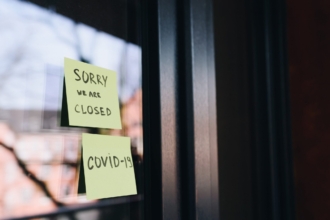

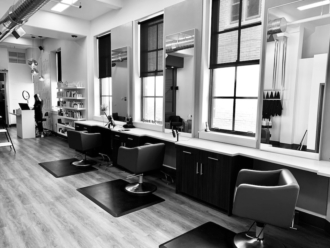








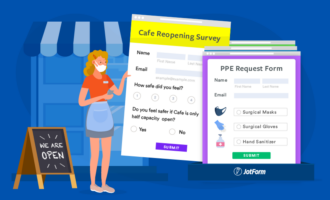




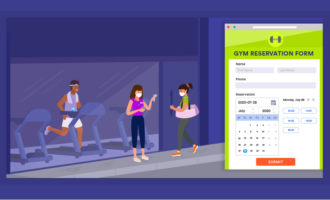
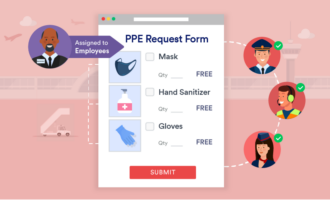




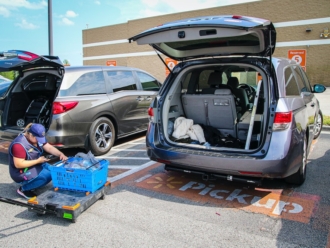





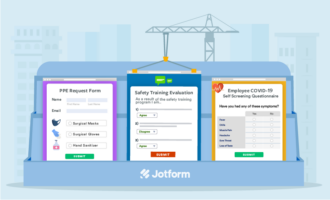





Send Comment: